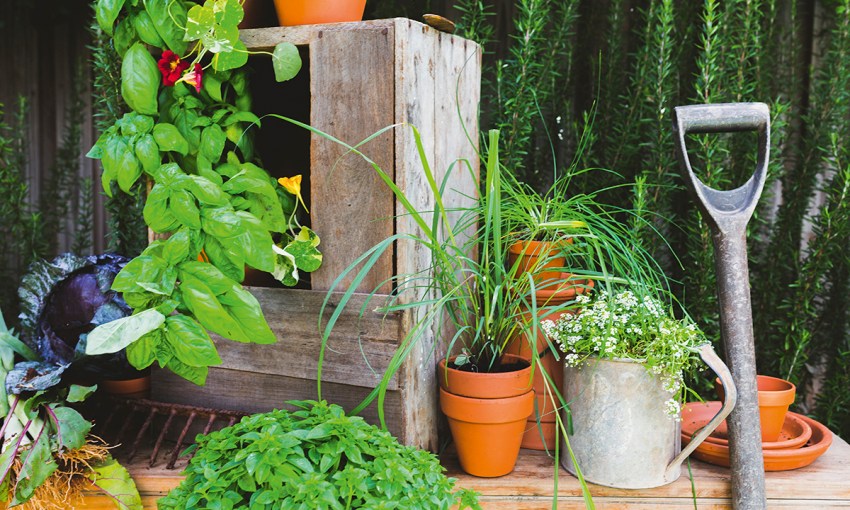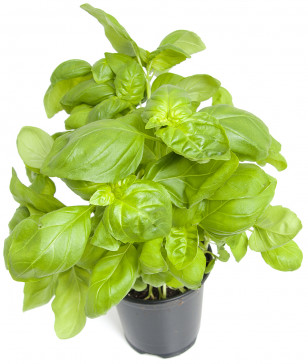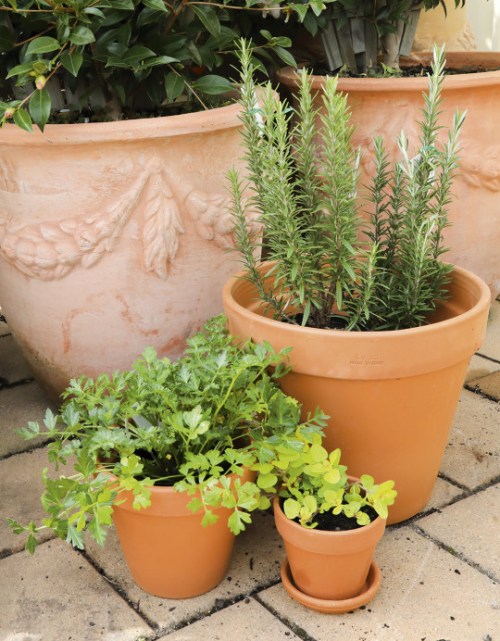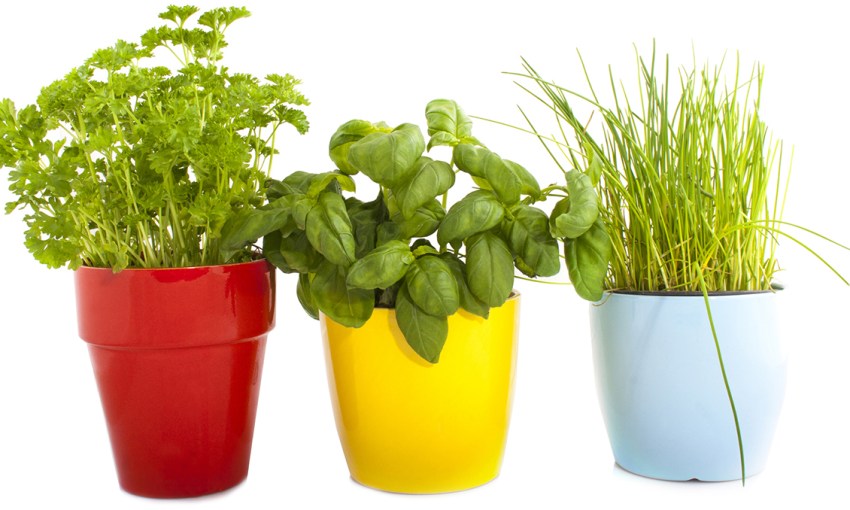Whether you have a large garden or just a couple of pots, herbs are easy to grow, with a long list of benefits and uses.
In the garden: Grow herbs for health
Fresh or dried, herbs add zest to cooking, perfume to the home and have many medicinal and cosmetic benefits. Harvesting fresh and tasty herbs from your own garden plot is highly rewarding.
There is a huge range of herbs available and it is best to purchase different herbs in each season to maintain a constant supply throughout the year. Planting can be done whenever plants are available, provided regular watering is maintained during the drier times. As with any garden, your plants will only grow as well as the soil they are growing in allows. Prepare beds with lots of organic matter such as animal manure and compost. Add a good organic fertiliser before and after planting to give your plants the best start.

Growing herbs in containers
Potted herb gardens are very popular with block sizes becoming smaller. Pots planted with favourite herbs are movable, convenient and look fabulous. Growing several herbs together in the one pot or bowl is great value and makes harvesting very easy. When growing herbs in pots, always use a premium quality potting mix for the best results.
Selecting your herbs
It makes good sense to grow the herbs that you love to use in your cooking. Whether in the garden or as a potted herb garden, selecting the herbs that enjoy the same growing conditions will result in the best results for the least effort.
 Herbs for dry places
Herbs for dry places
Basil is traditionally used in Italian cooking. Spicy and pungent, it is delicious with tomatoes, vegetables, pasta and salad.
Dill has delicate anise-flavoured leaves that combine well with fish and vegetables. The seeds can be used in pickles and breads.
Garlic has a pungent aroma that enhances many styles of cuisine. Widely used in French and Mediterranean cooking, it also has remarkable medicinal properties. Garlic grows very well in most regions of South Australia.
Marjoram is traditionally used in mixed herbs and is a good addition for savoury dishes, tomatoes and meats.
Oregano is similar to marjoram and is great with pasta, pizza, tomatoes, meat and dressings.
Sage is traditionally used for meat stuffing and is also good for drying.
Tarragon is a good accompaniment to chicken, fish, and vegetable dishes and herb vinegar.
Garden thyme and lemon thyme are invaluable additions to savoury dishes, meat dishes, soups, salads, vegetables and baking. There are many other ornamental varieties.
Herbs for damp places
Chives have a delicate onion flavour and are used in savoury dishes, salads and as a garnish
for soup.
Chervil has a delicate aniseed flavour and is great for enhancing fish and egg dishes.
Coriander is both spicy and intense, invaluable for curry dishes.
Fennel has a delicious flavour for fish or meats, both raw or braised.
Mint is used traditionally with potatoes, peas and lamb. It is also refreshing in salads and as a garnish for fruit and summer drinks.
Parsley has a refreshing flavour and is widely used in savoury sauces, meat dishes, soups, salads, baking and garnishes.
Herbs for other purposes
For teas try lemon balm to relieve headaches, borage to lift the spirits and chamomile for its well-known calming properties. For ornamental herbs try purple basil for its striking colour, catmint with its misty lavender flowers that are lovely under roses, and curry plant for its silver leaves and rich scent.

Fragrance
Try Corsican jewel mint with its tiny strongly-scented leaves, pennyroyal mint with its crisp peppermint smell, and thyme varieties purple, white or woolly.
Aftercare
Trim after flowering to keep compact, bushy and to encourage new growth. Water as required in summer. Mulch in early spring and autumn and feed with a high-quality fertiliser in early spring.
This story first appeared in the Winter 2019 issue of SALIFE Gardens & Outdoor Living magazine.



